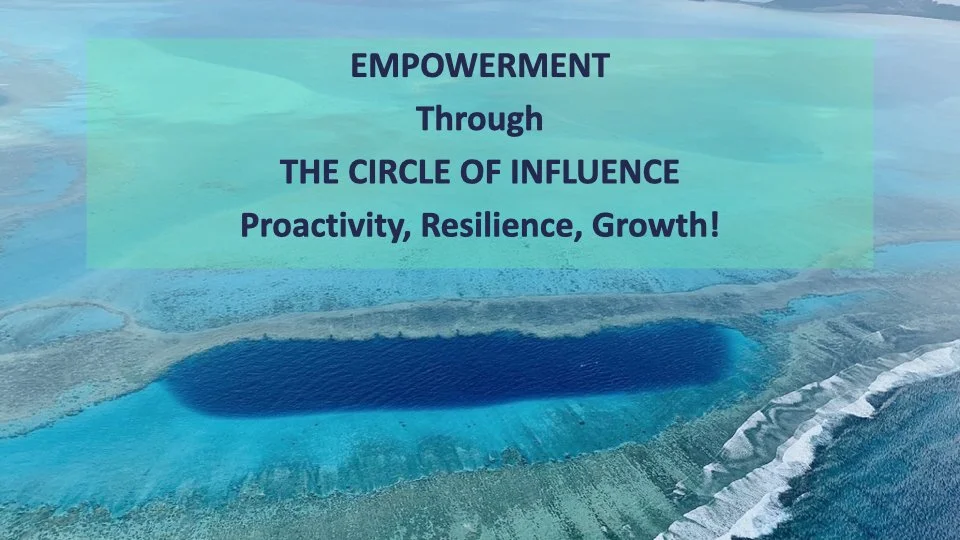Empowerment in Action: Unleashing the Circle of Influence
In a fast-paced and often unpredictable world, understanding where to focus our energy can make the difference between feeling empowered and feeling overwhelmed. This week, during our global team meeting, we explored a timeless concept from Stephen Covey’s The 7 Habits of Highly Effective People—the Circle of Influence. This framework serves as a powerful tool to enhance both personal effectiveness and team productivity.
Understanding the Circle of Influence
Stephen Covey’s Circle of Influence helps differentiate between what we can control and what we cannot. It consists of two key areas:
The Circle of Influence: Encompasses the things we can directly affect—our actions, attitudes, and responses to situations. By focusing on this sphere, we cultivate positive change and expand our impact.
The Circle of Concern: Includes external factors beyond our control, such as economic conditions, global events, and other people’s behaviors. While these concerns may demand our attention, dwelling on them can lead to stress, frustration, and a sense of helplessness.
The key to effectiveness lies in shifting our focus away from the Circle of Concern and directing our time and energy toward the Circle of Influence.
The Power of Proactive Thinking
One of the most compelling insights from Covey’s work is the contrast between reactive and proactive individuals:
Proactive people focus on what they can change. They channel their energy into meaningful actions that drive results. As Covey states, “Proactive people work on things they can do something about. Their energy is positive, enlarging, and magnifying.”
Reactive people, on the other hand, spend time and energy worrying about things outside their control, leading to frustration, victimization, and blame.
By consciously choosing a proactive mindset, we not only enhance our own effectiveness but also create a ripple effect, fostering a culture of resilience and productivity within our teams.
Applying the Circle of Influence in Our Work and Lives
Recognizing the distinction between these two circles is a game-changer. Here are some practical ways to apply this concept:
Identify Your Sphere of Control: Take a moment to list things you can directly influence. This could be your communication style, daily habits, skill development, or problem-solving approach.
Shift Your Focus: Whenever you catch yourself stressing over something beyond your control, redirect that energy toward an actionable step within your Circle of Influence.
Empower Your Team: Encourage colleagues to focus on solutions rather than obstacles. When teams adopt this mindset collectively, it fosters a culture of innovation and positivity.
Practice Resilience: Challenges are inevitable, but how we respond to them determines our growth. Strengthen your adaptability by maintaining a problem-solving attitude.
Cultivating a Culture of Influence
By emphasizing our Circle of Influence, we empower ourselves and those around us to take charge of our circumstances. When organizations and individuals operate within this framework, they cultivate resilience, enhance productivity, and create a work environment that thrives on positivity and proactivity.
At the end of the day, our greatest power lies in what we choose to focus on. Let’s continue investing in the things we can influence, expanding our impact, and unleashing our full potential!

